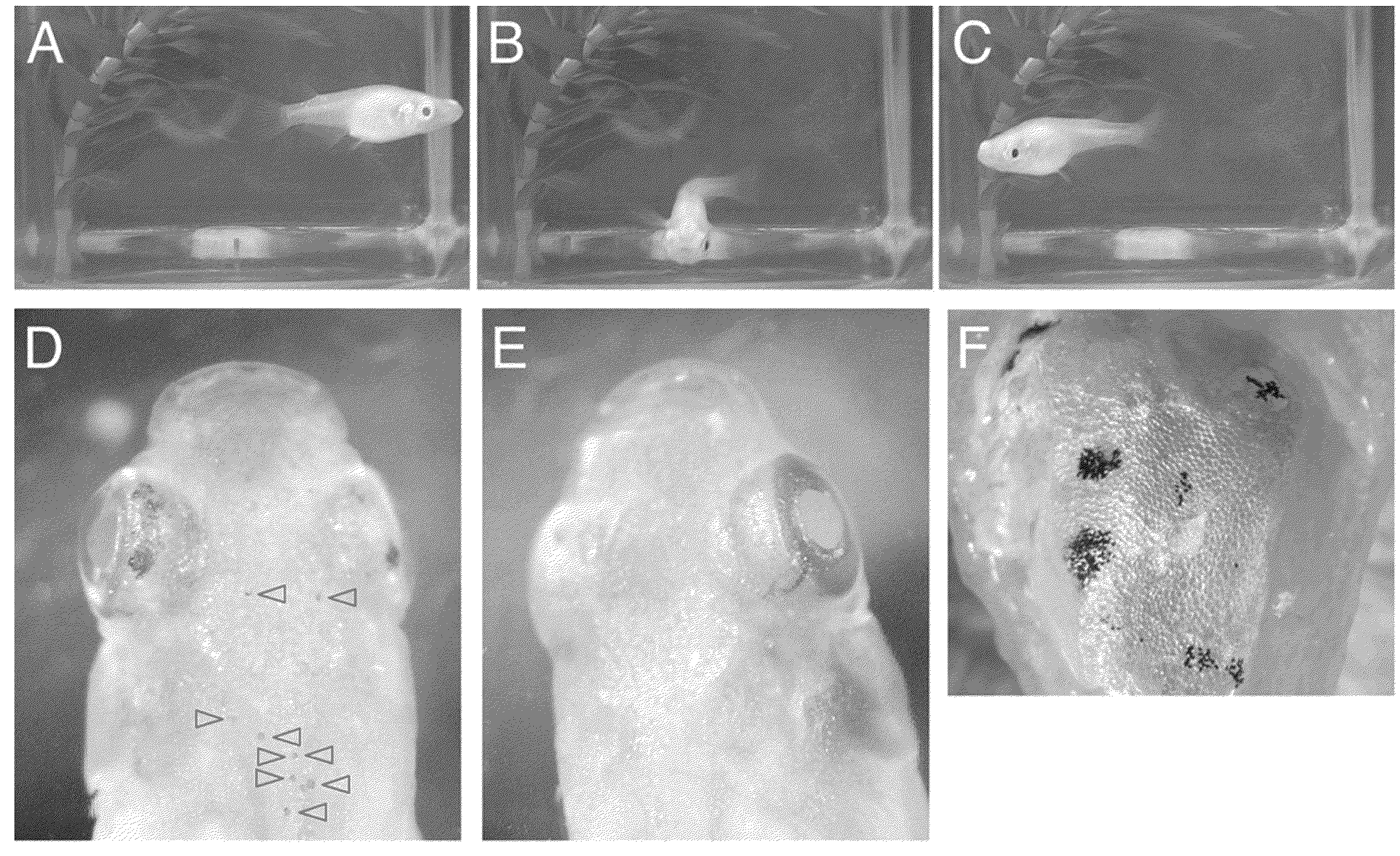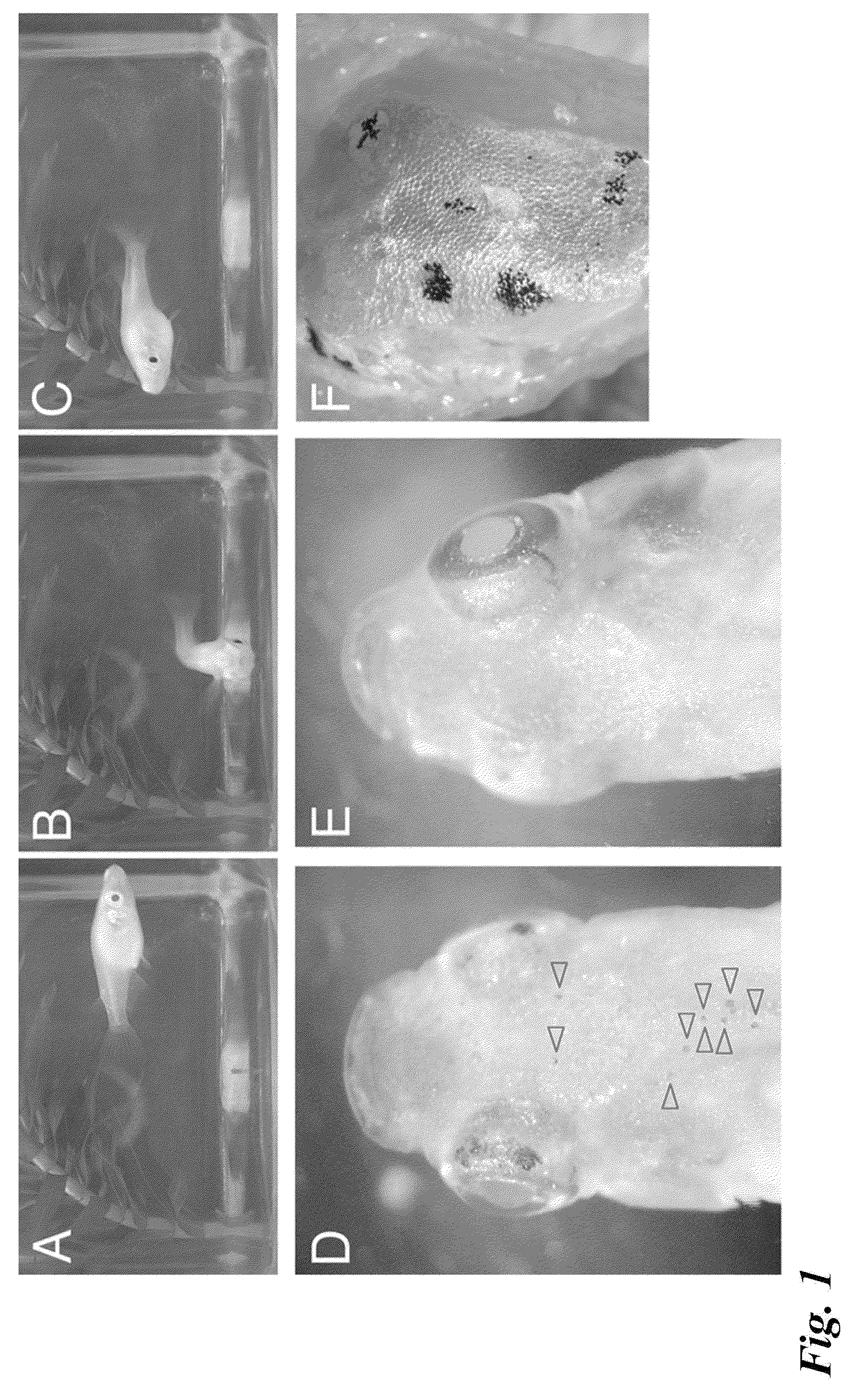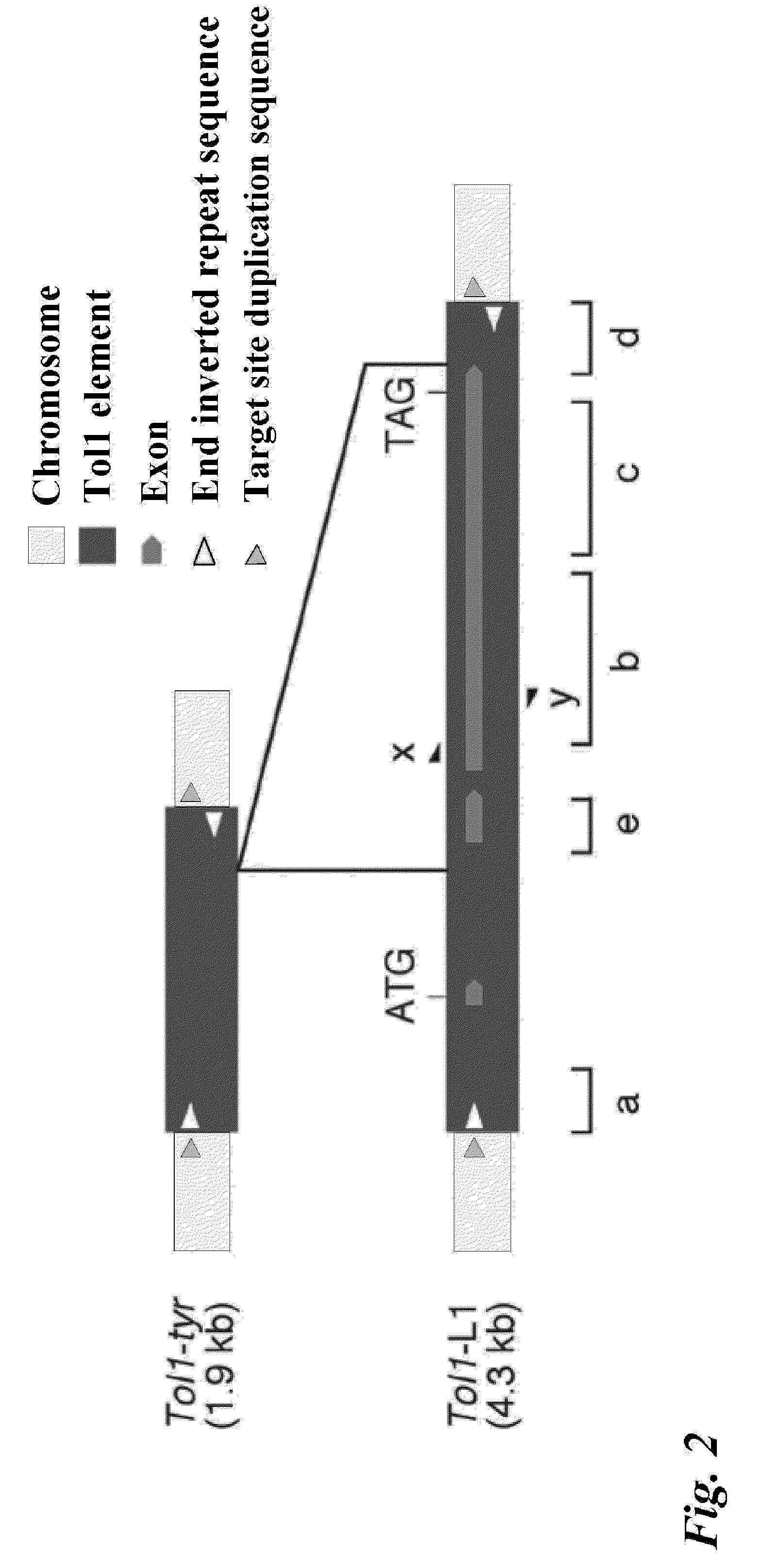Tol1 FACTOR TRANSPOSASE AND DNA INTRODUCTION SYSTEM USING THE SAME
a technology of tol1 and dna, applied in the field of tol1 factor transposase and dna introduction system using the same, can solve the problems of de novo insertion of this element in a chromosome, most of the dna transposable elements of vertebrate lose transposable activities, etc., and achieve the effect of enhancing the usefulness and utility value of tol1 elemen
- Summary
- Abstract
- Description
- Claims
- Application Information
AI Technical Summary
Benefits of technology
Problems solved by technology
Method used
Image
Examples
example 1
1. Materials and Methods
(1) Fish
[0171]Complete albino phenotype medaka fish were found from a commercially bred group more than 30 years ago (Cited document 27). A line was established from this individual, and kept in an experimental laboratory. In this albino mutant, 1.9 kb of Tol1 element is inserted in the first exon of a tyrosinase gene (Cited document 11). An individual showing mosaic pigmentation appeared in a subline maintained in Niigata University in 2001. Pigmentation did not occur in the primary line maintained in Nagoya University. The primary line was determined to call i1-Tomita and the pigmented subline was determined to call i1-Niigata (Cited document 12). These designations are simplified and expressed as the subline A and the subline B, respectively. Both of the sublines have never been hybridized with other lines so far.
(2) Database
[0172]The following databases provided for public use were used: database used for constructing a base sequence that is considered to...
example 2
[0220]Now that an autonomous copy of Tol1 element (Tol-L1, length 4355 bp, DDBJ AB288091, SEQ ID NO: 4) and a transposable enzyme gene (length 2900 bp, DDBJ AB264112, SEQ ID NO: 3) are in hand as clones (Example 1), it can be thus recognized that Tol1 element is available as a genetic tool applicable to mammals.
[0221]Reduction of the transposition frequency with decrease of the size of an element is a common feature of transposable elements. Thus, “loading ability” is important when an element in use is selected. The “loading ability” herein means the “maximum length of a DNA fragment that can be carried by an element.” Tol1 element is expected to be highly useful in this regard. The first reason is that Tol1 element belongs to the hAT family. The hAT family is a group of transposable elements represented by hobo element of drosophila, Activator element of corn, and Tam3 element of snapdragon (Cited documents 2 and 16). A particular characteristic of this family is a longer complete...
example 3
[0263]It was shown in Example 2 that Tol1 has a characteristic of being able to carrying a long DNA fragment in a chromosome and is an excellent genetic tool. Specifically, it was revealed that Tol1 effectively transfers even if the whole length is as long as 22.1 kb and that Tol1 functions as a vector if the total length of left and right arms is only 263 kb. Further, it has been already proved that Tol1 transfers in humans and mice in addition to medaka fish (Example 1, Cited document 15). Therefore, a transposable activity is expected to be present in a wide range of vertebrates.
[0264]A DNA transposable element transfers mainly in a mode of “cut and paste.”“Cut” indicates a process of drawing out an element from a DNA molecule such as a chromosome on which the element is currently carried. “Paste” means incorporation of the element drawn out into the same or another DNA. Herein, when “cut” occurs, detection thereof is easy because sufficient information can be obtained by an anal...
PUM
| Property | Measurement | Unit |
|---|---|---|
| concentration | aaaaa | aaaaa |
| concentration | aaaaa | aaaaa |
| pH | aaaaa | aaaaa |
Abstract
Description
Claims
Application Information
 Login to View More
Login to View More - R&D
- Intellectual Property
- Life Sciences
- Materials
- Tech Scout
- Unparalleled Data Quality
- Higher Quality Content
- 60% Fewer Hallucinations
Browse by: Latest US Patents, China's latest patents, Technical Efficacy Thesaurus, Application Domain, Technology Topic, Popular Technical Reports.
© 2025 PatSnap. All rights reserved.Legal|Privacy policy|Modern Slavery Act Transparency Statement|Sitemap|About US| Contact US: help@patsnap.com



